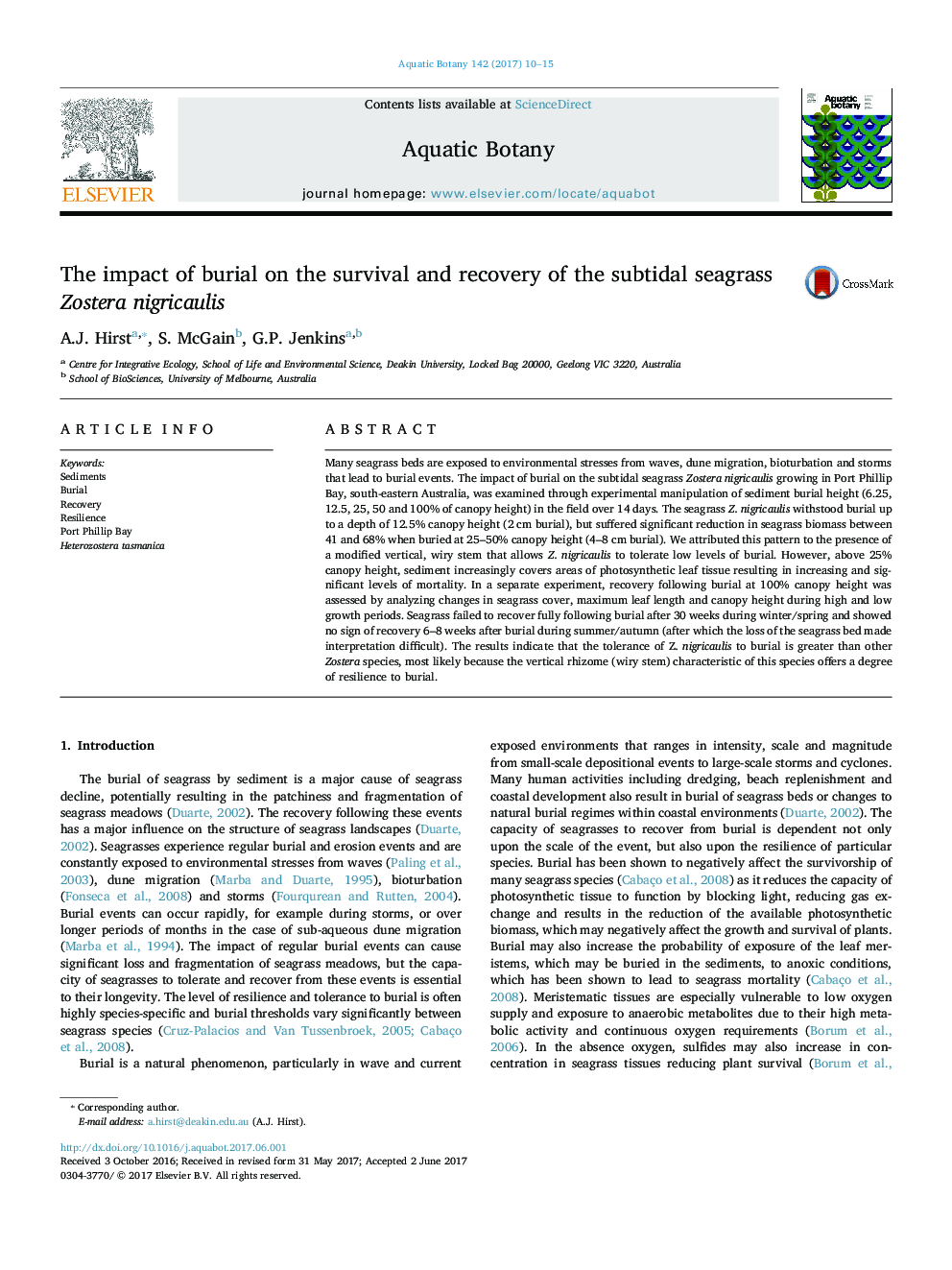| Article ID | Journal | Published Year | Pages | File Type |
|---|---|---|---|---|
| 5763970 | Aquatic Botany | 2017 | 6 Pages |
Abstract
Many seagrass beds are exposed to environmental stresses from waves, dune migration, bioturbation and storms that lead to burial events. The impact of burial on the subtidal seagrass Zostera nigricaulis growing in Port Phillip Bay, south-eastern Australia, was examined through experimental manipulation of sediment burial height (6.25, 12.5, 25, 50 and 100% of canopy height) in the field over 14Â days. The seagrass Z. nigricaulis withstood burial up to a depth of 12.5% canopy height (2Â cm burial), but suffered significant reduction in seagrass biomass between 41 and 68% when buried at 25-50% canopy height (4-8Â cm burial). We attributed this pattern to the presence of a modified vertical, wiry stem that allows Z. nigricaulis to tolerate low levels of burial. However, above 25% canopy height, sediment increasingly covers areas of photosynthetic leaf tissue resulting in increasing and significant levels of mortality. In a separate experiment, recovery following burial at 100% canopy height was assessed by analyzing changes in seagrass cover, maximum leaf length and canopy height during high and low growth periods. Seagrass failed to recover fully following burial after 30 weeks during winter/spring and showed no sign of recovery 6-8 weeks after burial during summer/autumn (after which the loss of the seagrass bed made interpretation difficult). The results indicate that the tolerance of Z. nigricaulis to burial is greater than other Zostera species, most likely because the vertical rhizome (wiry stem) characteristic of this species offers a degree of resilience to burial.
Related Topics
Life Sciences
Agricultural and Biological Sciences
Aquatic Science
Authors
A.J. Hirst, S. McGain, G.P. Jenkins,
